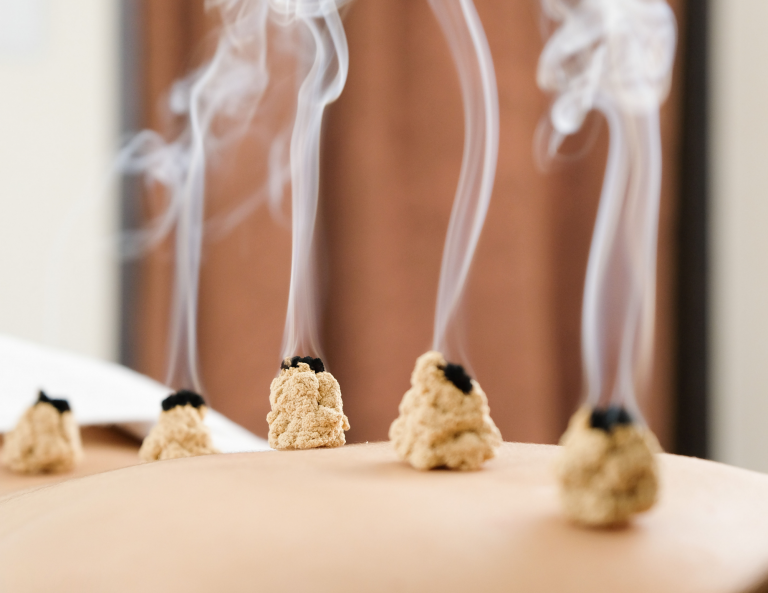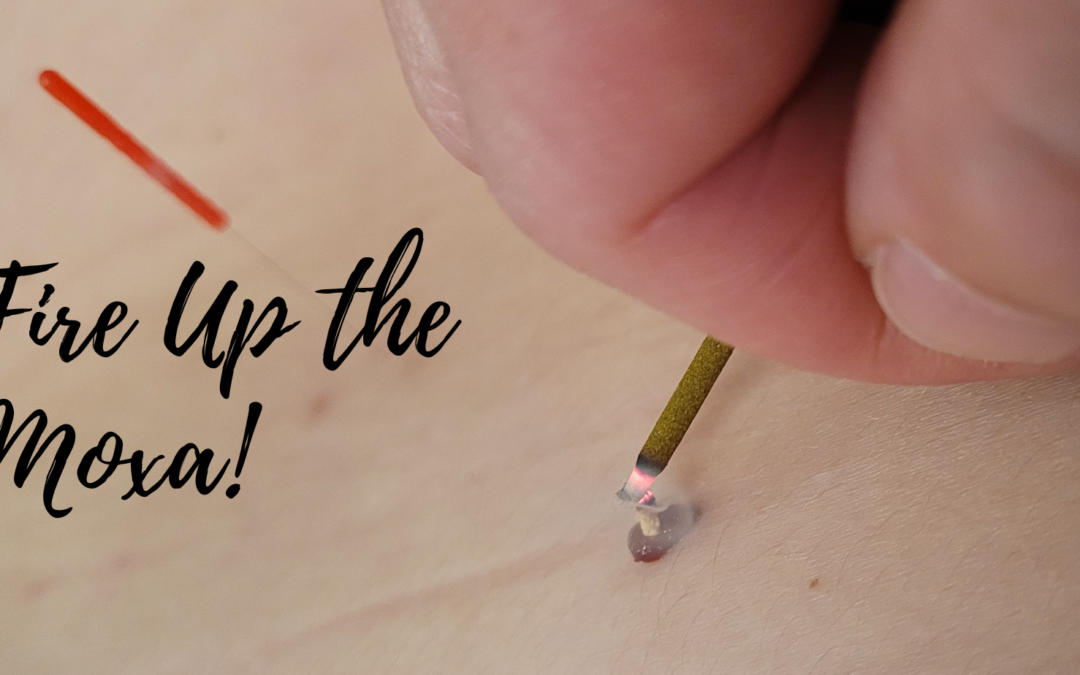As a Japanese Acupuncturist, I use adjuncts a lot during treatment. Adjuncts are something other than needles during a treatment. One of them I use is moxa. When I tell people that I use moxa, they often say “moxie”. LOL, not moxie, but moxa. I use moxa on people. What exactly is moxa?
Moxibustion is a treatment that involves burning the herb mugwort (a.k.a. moxa). It can be burned directly or indirectly on the skin. Personally, I’m a fan of the indirect moxa because I don’t like scarring. That’s what direct moxa does – it scars your skin. So, indirect moxa can be placed on the head of a needle, on a barrier (i.e. garlic, ginger, cream, screen), or in a device (i.e. rolled moxa, moxa box, tiger warmer). I typically use little moxa threads burned on a barrier (cream) on the skin. Which form of moxa you use depends on what and where you are treating. There are also different grades of moxa to use.
There are three grades of moxa that can be used; pure, semi pure, and crude. As you can imagine, crude moxa has a lot of particulates in it, whereas pure moxa is a significantly cleaner moxa. The crude moxa burns hotter than the pure moxa so crude moxa is typically used in rolled form and the pure moxa is used with the direct or indirect (on a barrier) method. Ok, so it can be burned directly or indirectly on the skin and there are three different grades to moxa. But, why do you use moxa in the first place?

Moxa can be used as an adjunct to an acupuncture treatment or as a stand alone treatment. Its function is to move Qi and strengthen the blood (like an acupuncture needle) and to provide therapeutic heat to the local area. Some of the benefits of moxa include boosting the immune system, decreasing pain and inflammation, improving circulation, helping GYN issues in women, improving digestion, sleep disruptions, and anxiety or stress. I typically use moxa in all my treatments as an adjunct to the needles. If you’ve never had a moxa treatment, maybe it’s time you do.

